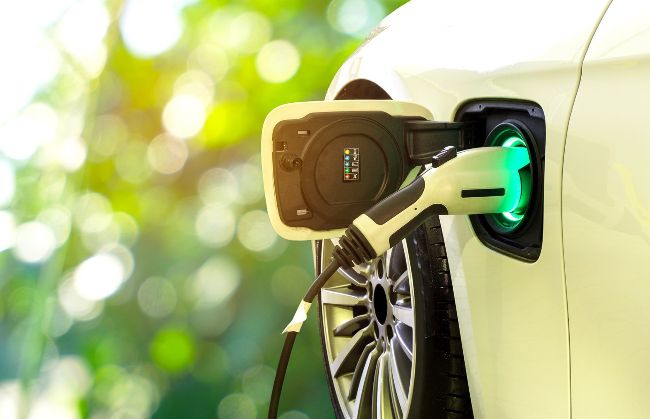Dissecting electric vehicles lubrication

SOURCE | SHUTTERSTOCK/ SMILE FIGHT
Efficiency is vital for electric vehicles; how can lubricants contribute to maintaining it?
There are various ways to improve the efficiency of the driveline unit. Key factors to consider when selecting lubricants include avoiding viscous drag and friction. These are crucial for both electric and traditional engines.
EVs require efficient and fast heat removal from the motor to enhance performance. EV fluids must have exceptional heat transfer characteristics. The fluid’s viscosity is a major enabler of improved fluid thermal management, which means that EV fluids typically have lower viscosity than conventional automatic transmission fluids.
How can EV driveline fluids offer the right level of protection?
Electric motors run at high Revolutions Per Minute (RPMs), meaning the driveline fluids need to work hard to protect gears from wear damage. Combining sufficient protection with the high performance expected in the next generation of vehicles is a challenge. Fluids must reliably transfer power to the wheelbase with minimum drag and churning in the gear set while providing the protection required to keep the asset working for longer.
Low-viscosity driveline fluids provide better flow throughout the e-motor and parts. An appropriate fluid can help reduce friction on the gears and bearings while allowing improved heat transfer and thermal efficiency. Combined, the motor will run at its highest efficiency, keeping copper windings and motor components within optimal electrical motor efficiency.
Are material compatibility and conductivity factors when choosing electric vehicle products?
Yes. Material compatibility is essential with EVs due to the copper hairpin windings and electronic components.
Whereas an internal combustion engine (ICE)based driveline fluid is primarily focused on durability and performance, it is critical for EV fluids to include a balance of conductivity while avoiding issues with electrical arcing or sudden electrical discharge.
The hardware of an EV is fundamentally different from that of an ICE, and in many cases, the motor is in the same compartment as the gearbox.
As electrical current passes through more components, Original Equipment Manufacturers (OEMs) must collaborate with EV fluid developers to design fluids with optimum conductivity—the aim is to keep it low but avoid electrical discharge and damage to the electric drive unit.
A quality EV fluid will protect the e-driveline unit by providing adequate antiwear protection, electrical properties, compatibility with copper and new materials, and improved unit efficiency.
What am I looking for in an EV bearing grease?
Different EV designs call for different lubricants. That is the case of dry-systems where the e-motor is externally cooled and specialized greases are used to lubricate the e-motor bearings.
The high operating speeds and materials compatibility requirements of the electric motors in EVs require specialized greases. Greases designed for EV applications provide extended high speed bearing life through enhanced oxidative and thermal stability. They also use carefully selected base fluids, thickeners, and additive systems to provide low friction, extend driving range, and ensure low noise operation. In addition, the additive systems must avoid using corrosive Extreme Pressure (EP) additives that can damage the copper motor windings. Another important consideration is electrical conductivity. EV greases need optimized conductivity to protect bearings from damage due to electrical discharge.
The unique aspects of EVs impact grease choices in other areas as well. Due to their batteries, EVs are typically significantly heavier than their ICE counterparts. This added weight means extra stress on driveline components such as the ConstantVelocity (CV) joints. EVs offer an opportunity for more specialized CV joint greases with higher EP protection than in a traditional vehicle. .